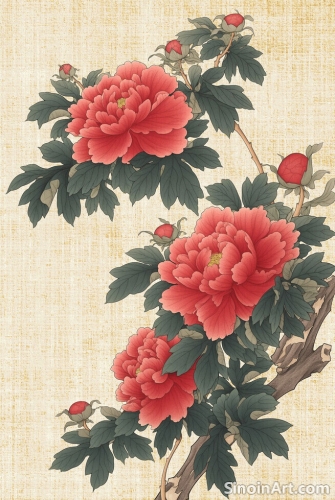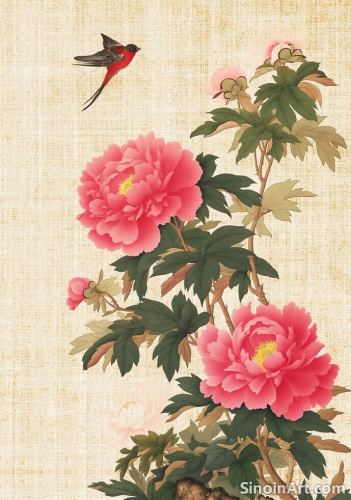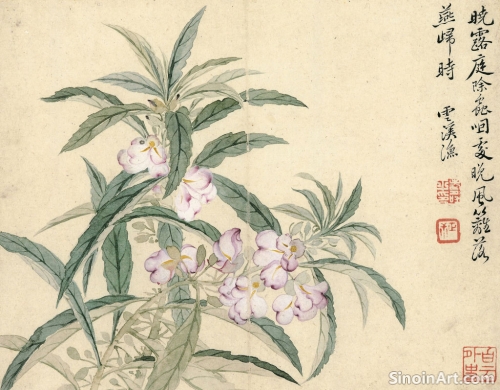The Spiritual Dimensions of Gongbi Painting
|
Beyond its technical aspects and aesthetic beauty, Gongbi painting is often imbued with spiritual dimensions. The meticulous and focused process of creating these artworks, as well as the symbolic language they often employ, can be seen as a form of spiritual practice, contemplation, and connection with the natural and divine realms. This spiritual connection is an important part of the artistic tradition.  The act of creating a Gongbi painting is often a slow, deliberate, and meditative process. The artist must cultivate a calm and focused mind in order to execute the precise linework and subtle color layering required by the technique. This focused approach creates a connection between the artist's inner world and the outer work of art. The act of creating becomes a form of meditation.  The choice of subject matter in Gongbi painting can also reflect spiritual beliefs. Flowers like the lotus, which represents purity and enlightenment, and birds like the crane, which symbolizes longevity and wisdom, often have spiritual significance. The choice of subject matter can provide spiritual meaning and context for the viewer.  The use of color in Gongbi also carries symbolic weight in the spiritual context. Colors like gold, which represent divine energy, and white, which represents purity, are often used to enhance the spiritual impact of the painting. The color choices are part of the visual language that communicates deeper spiritual ideas. Many Gongbi artists approach their work with a sense of reverence, seeing it as a form of connection with the natural world and the divine. They imbue their creations with their personal beliefs and spiritual aspirations, making each artwork a unique expression of both their technical skills and their spiritual vision. The personal connection to the art makes each work unique and meaningful. Gongbi painting offers a glimpse into the spiritual dimensions of Chinese culture and the interconnectedness of art, spirituality, and the natural world. The practice of creating art is seen not only as an artistic skill, but also as a spiritual path for the artist and a way to share a sense of inner peace with the viewer. The artistic work becomes a vehicle for both spiritual growth and contemplation. |
Tag : Spiritual art, Gongbi spirituality, art and meditation, Chinese spiritual art, inner peace in art
Related information
- The Use of Gold Leaf in Gongbi: Adding a Touch of Opulence
- Gongbi Painting and its Relationship to Calligraphy
- Gongbi Painting as a Form of Meditation and Mindfulness
- The Challenge of Large-Scale Gongbi Painting
- Learning Gongbi: A Guide for Aspiring Artists
Discusses the use of gold leaf in Gongbi painting, its application techniques, symbolism, and contribution to the opulence and visual impact of the art.
This article examines the interconnected relationship between Gongbi painting and Chinese calligraphy, highlighting their shared techniques, the importance of line and ink, the concept of qi, and how the study of calligraphy can enhance the skills of a Gongbi artist.
This article explores the connection between Gongbi painting and meditation, highlighting how the meticulous process fosters mindfulness, focus, and a contemplative state of mind for the artist.
This article explores the unique challenges of creating large-scale Gongbi paintings, including maintaining precision, acquiring specialized materials, managing composition, and the time-consuming process of layering colors and details.
A practical guide for aspiring Gongbi artists, covering essential learning steps, materials, and practice techniques.